Every Foo Fighters Album Ranked From Worst to Best
The post Every Foo Fighters Album Ranked From Worst to Best appeared first on Consequence.
Welcome to Dissected, where we disassemble a band’s catalog, a director’s filmography, or some other critical pop-culture collection. It’s exact science by way of a few beers. This time, we’re ushering in Foo Fighters Week with a definitive ranking of the rockers’ discography.
“Reliable” is perhaps the most apt term to describe Foo Fighters’ legacy in 2022. Across ten albums, Dave Grohl, Pat Smear, Nate Mendel, Chris Shifflett, Taylor Hawkins, and most recent member Rami Jaffee have seemingly cracked the code for rock in the 21st century. There’s an unapologetic earnestness and vigor, led with ease by Grohl, that has characterized all of the band’s biggest songs and albums. Even on their weaker LPs, the band just doesn’t miss.
Originally existing as a solo project for Grohl after the tragic passing of Kurt Cobain, Foo Fighters’ sonic evolution began in a small, introspective way, before eventually transforming into a cathartic, powerhouse six-member outfit. These days, Foo Fighters are not only one of the best selling rock acts of all time, they’re revered heavily for their ethos and philosophy, prioritizing the spirit of creating rock music in its purest form above all else.
Over 25 years into their existence, the Rock & Roll Hall of Famers have conquered the music world without scandals or compromising their essence. Grohl has aged, certainly, but he’s done so with wisdom, grace, and his trademark humor, ever the champion of newer artists carrying the Foos’ torch and proudly maintaining his platform of rock icon. To this day, each news headline involving Grohl’s name is more heartwarming than the last.
We write A LOT about Foo Fighters here at Consequence, and trust us, we’re aware — but we write so much about them because of how undeniable their presence in modern rock music is, and how well they’ve maintained their status and image without losing their edge.
Many of us, including this writer, have experienced defining and life changing moments at Foo Fighters shows. (We’re looking forward to getting more of our fill at their upcoming stadium dates.) And if you love music, the band makes it incredibly easy to connect with them.
Here are each of Foo Fighters’ ten studio albums ranked.
— Paolo Ragusa
10. Sonic Highways (2014)

Runtime: 42 minutes, 8 tracks
Kudos, My Hero: Foo Fighters recorded each song on Sonic Highways in a different city, drawing inspiration from the environments and musical history within which they were working. They used local engineers and musicians to polish off the album in these various studios, but rather than get a new producer for each city, the band recruited longtime producer Butch Vig to round everything out.
The Best of You: “Outside” was recorded in the California desert and features a stellar solo from Eagles guitarist Joe Walsh. Though the track takes the experience of getting out of the city and into the natural environment of the desert quite literally, it’s definitely one of the most curious and cathartic songs on Sonic Highways.
It bears mentioning once again that Walsh’s pivotal extended solo throughout the song’s bridge is one of the brightest moments on the album — and the band agrees About the solo, Hawkins said, “If you’re gonna have Joe Walsh on your album, you’re not gonna just give him four bars. You’re gonna give him 40 bars and take us out into the fuckin’ desert, man!”
The Pretender: “In the Clear” is one of those odd Foo Fighters tracks that fails to leave any kind of impression. Taking inspiration from the jazz hall acts of New Orleans, Foo Fighters couldn’t quite manage blending those styles with their own, failing to echo the stories of The Big Easy’s prolific musical backdrop.
Stacked to the Rafters: “Something From Nothing” came out with a bang — and a lot of that had to do with the album’s accompanying HBO mini series Foo Fighters: Sonic Highways. With an opening that calls “The Pretender” to mind, Foo Fighters truly build “something from nothing,” starting small and eventually exploding with pure rock and roll energy.
Them Balloons Are Pretty Big: Foo Fighters may not have won any awards for Sonic Highways, but the docuseries was a major move for the band — as we know from their upcoming horror-comedy film Studio 666, the Foos are definitely good on camera.
When I Sing Along with You: The puzzling thing about Sonic Highways is that when watching the series, you really get the sense that this band cares about music, history, and the powerful dynamics that tie it all together from city to city. Yet, even with all the various genres represented by its guest stars, the album doesn’t contain nearly enough experimentation or risk-taking from Foo Fighters.
A lot of the songs seem to fall flat or feel rushed, and though Grohl’s lyrics were inspired by these locations, he ended up using this inspiration in a much more literal and on-the-nose way. There are some gems, as there are on all Foo Fighters albums, but Sonic Highways doesn’t quite reach the payoff that its high ambitions were expecting. — P.R.
09. Concrete & Gold (2017)

Runtime: 48:17, 11 tracks
Kudos, My Hero (Producer): Concrete and Gold was Foo Fighters’ first collaboration with Greg Kurstin, a storied, cross-genre producer who’s worked in recent years with Adele, Beck, Paul McCartney, Maren Morris, and more. Kurstin’s robust background in pop especially might have fed into the clean, attainable momentum of tracks like “Make It Right,” and the production album-wide is unadorned and crisp in a way that’s not particularly showy, but still feels like it serves the music.
The Best of You (Best Song): Concrete and Gold has a few solid standouts, but “Run” marks the most interesting instance in the development of Foo Fighters’ sound. Twenty-plus years into making music together, meaningful development isn’t an easy thing to come by — especially without feeling like a heel turn for its own sake. The incorporation of metal into “Run” feels not only organic and warranted, but actually necessitated by the character of the album at large. It’s the most successful synthesis on the album of classic, characteristic hard rock, and a heavier, metal-adjacent sound the band at that time had yet to fully dive into. “Run” also set the tone for the rest of the album, with its sentiments of striving for survival and sanity amid political chaos.
The Pretender (Worst Song): “La Dee Da” uses references to obscure racist bands to criticize the short-sightedness of the “pretty promises” made in racist politics and circles — a strong message in general, but here it’s left relatively uncomplicated by the song’s treatment of it. Some of Grohl’s seething vocals feel like fitting counterparts to the metal introduced in “Run,” and the track contains a few semi-standout lines, like, “Love who I like/ Hate if I want to.” Overall, though, “La Dee Da” finds the raging, static heaviness threaded throughout Concrete and Gold arriving at less of a real conclusion than some of its more skillfully developed counterparts.
Stacked to the Rafters (Biggest Single): “Run” and “The Sky Is a Neighborhood” both peaked at No. 1 on Billboard’s Mainstream Rock Airplay chart. While “Run” was the lead single and marked some of the most interesting sonic moments on the album, “The Sky Is a Neighborhood” is imbued with a memorable catchiness that feels tailor-made for stadium success.
“The Sky Is a Neighborhood” searches for solace in the atomic connection of human life to the universe at large, but without sacrificing the angst and turmoil central to the album as a whole — a contradiction which only works in the song’s favor. The expansion of the titular chorus into the lines, “Oh my dear, Heaven is a big bang now/ Gotta get to sleep somehow,” is impossible to shake once it gets in your head, and feels like a characteristic moment of determined rock meant to sit somewhere near the classics in their discography.
Them Balloons Are Pretty Big (Grammys/Accolades): Concrete and Gold was the second Foo Fighters album to debut at No. 1 on the Billboard 200, and its singles were popular and climbed multiple charts upon release. “Run” was the song that carried the album in terms of critical acclaim, winning a Grammy for Best Rock Song and a Grammy nomination for Best Rock Performance in 2018. Concrete and Gold wasn’t overly lauded, but it didn’t do too terribly, either, especially for a later-career album.
When I Sing Along with You (Analysis): Foo Fighters found fertile ground in their ninth studio album’s effort to tread the line between, as Grohl put it, “Hope and desperation.” These key themes provided a reliable rudder for an album with a solid balance between intense hard rock, more ruminative prog rock, and even metal — even during the moments when it felt like the band hadn’t fully decided how they felt about the themes in question.
Concrete and Gold is loaded with noticeable influences from fellow bands and predecessors; it’s easy to hear Led Zeppelin in the guiding guitar line of “Make It Right,” The Beatles in the background vocals of “Happy Ever After (Zero Hour)” and the reliable drumline and nostalgic electric guitar of “Sunday Rain” (which featured an actual Beatle, Paul McCartney, on drums). But it still holds true to the Foo Fighters’ sonic priorities in its persistent intensity, and in all these songs, Grohl’s vocals reaffirm the band’s effort and conviction, even when their messages fall short via straightforward lyrics or expected melodies.
Hope and desperation are necessary foils in the conflicted world with which Concrete and Gold tries to engage — but the album’s commitment to both at times keeps it from delving into either with quite the amount of depth and reflection they demand. Still, firm artistic conclusions to ongoing, real-life conflicts are a tall order, and the album’s ultimate progression from “Just trying to keep my T-shirt clean” to “Our roots are stronger than you know/ Up through the concrete, they will grow” manages to be a relatively convincing one.
In a year that was (like many recent years) plagued by uncertainty, Foo Fighters didn’t have many strict answers to offer here. Still, they did follow through sufficiently on their usual ability to carve meaning and ferocity from the fear. — Laura Dzubay
08. Medicine at Midnight (2021)
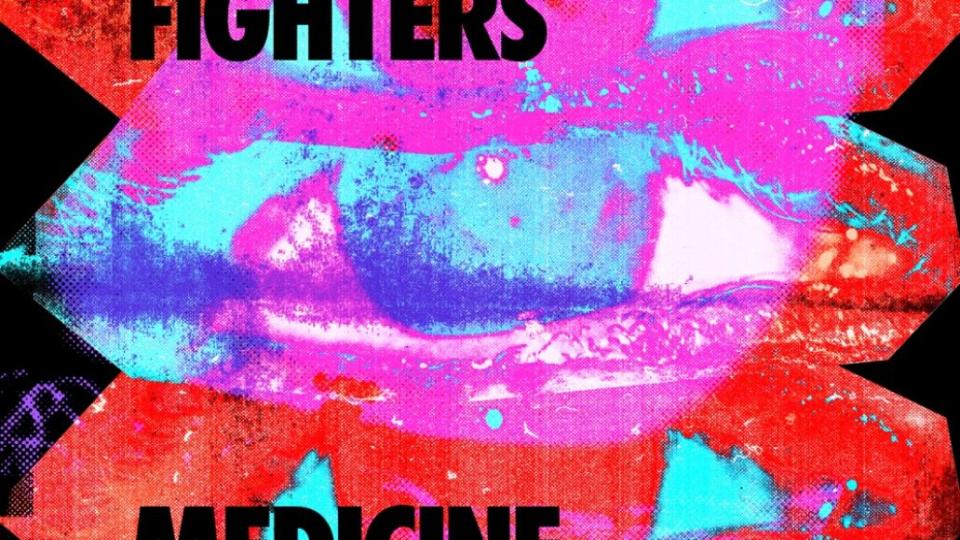
Runtime: 36:32, 9 tracks
Kudos, My Hero: Medicine at Midnight saw the return of Greg Kurstin, who also helped produce Concrete and Gold. Again, Kurstin’s crisp, polished style allows the songs here to speak for themselves; the album is full of solid, evenly built tracks with polished production in which cohesion feels natural and contrasts, like the buildup in the intro to “Love Dies Young,” stand out in gleaming, intentional focus.
The Best of You: “Shame Shame” isn’t a loud or particularly energetic song, especially by Foo Fighters’ standards, but the plucky riff guiding and driving the chorus at the center of it is a tough one to resist. While Medicine at Midnight is bookended by “Making a Fire” and “Love Dies Young,” two anthemic songs that feel like honorable efforts at a classically crowd-pleasing Foo Fighters sound, “Shame Shame” is the best exemplar of what the slower, driving rhythms of much of the rest of the album are trying to get at.
It contains some of the album’s crispest lyrics (“If you want to/ I’ll make you feel something real just to bother you”), and the delicate, near-whispered refrains of “Shame, shame, shame, shame” accomplish a quiet, nearly haunting (and definitely haunted) effect, which goes far beyond what’s achieved by the more ferocious vocals in louder songs that have less to say.
The Pretender: “No Son of Mine” feels like a mid-album attempt to inject more energy and intensity into a record that for the most part tends to go for slower and steadier paces; it possesses a driving, hard-rock energy, and finds Grohl ripping through intense vocals in the venting, frenetic chorus.
Unfortunately, the melody is repetitive enough that it doesn’t fully stand out in the listener’s memory as much as it’s attempting to, and it also suffers from relatively generic lyrics. In both cases, what’s set up in the first minute or so of the song does not get complicated or pushed much farther in the minutes that follow.
Stacked to the Rafters: “Waiting on a War” was the third single released, and it spent eight weeks at No. 1 on the Hot Hard Rock Songs chart. The track carries a direct relevancy and dynamism that makes it more thematically memorable than its fellow singles, as well as many of the other tracks on the album.
Inspired by a conversation with Grohl’s daughter as well as his own childhood in the 1980s under the looming shadow of the Cold War, “Waiting on a War” counters the overhanging fear and cultural domination of the idea of war, with a desperate central question that eventually morphs into a kind of conviction: “There’s got to be more to this than that.”
The cross-generational nature of the song’s inspiration keeps it from feeling overly particular to our current moment, which in a way impedes the resonance of what the song is trying to say. At the same time, its clear yet understated production and consistent guitar strums lend “Waiting on a War” a feeling of wistfulness and speculation, which feels appropriate to a song about helplessly beholding the idea of a dark future.
Them Balloons Are Pretty Big: Medicine at Midnight found its way onto a few year-end lists, including Rolling Stone’s 50 Best Albums of 2021, but didn’t collect any awards or major nominations. One distinction it does hold is being the first Foo Fighters album to have a horror-comedy movie coming out along with it: Studio 666, a February 2022 release that fictionalizes the making of the album inside a haunted Encino mansion. The band did create the album in this mansion, where they recall encountering some unexplainable phenomena; the movie dramatizes these events and adds the bonus angle of Dave Grohl being possessed by a supernatural force.
When I Sing Along with You: Medicine at Midnight is Foo Fighters’ first full album since 2017, and in the intervening years, the political turmoil with which Concrete and Gold tried to contend has only deepened (on top of the global pandemic that pushed this album’s release back from 2020). The album explores some real moments of heaviness and trepidation, but it also both starts and ends with fierce, glimmering rock songs that convey a sense of victoriousness that feels like it lives somewhere attainable.
The album is punctuated by intriguing riffs on “Cloudspotter” and “Holding Poison,” and bolstered by insistent, high-energy rock in “Making a Fire” and “Love Dies Young,” but it may actually be “Chasing Birds” that offers the clearest synthesis of what the album is trying to do.
Over the soft course of the song, the phrase “chasing birds” evolves through a meandering feeling of listlessness, eventually into an identification with triumph and striving to reach new heights. This feels true to the ultimate character of the album, which seeks to encourage its listeners to power through resignation and see what might wait on the other side.
Medicine at Midnight is a tighter album than its predecessor, and at times it even feels more hopeful, if only because its wisdom makes that hope slightly easier to access. Stylistically, it isn’t a particularly groundbreaking album for the band, but it’s a classic encapsulation of their sound, and it shows a solid and well-considered development of themes in which they were already interested. — L.D.
07. One by One (2002)
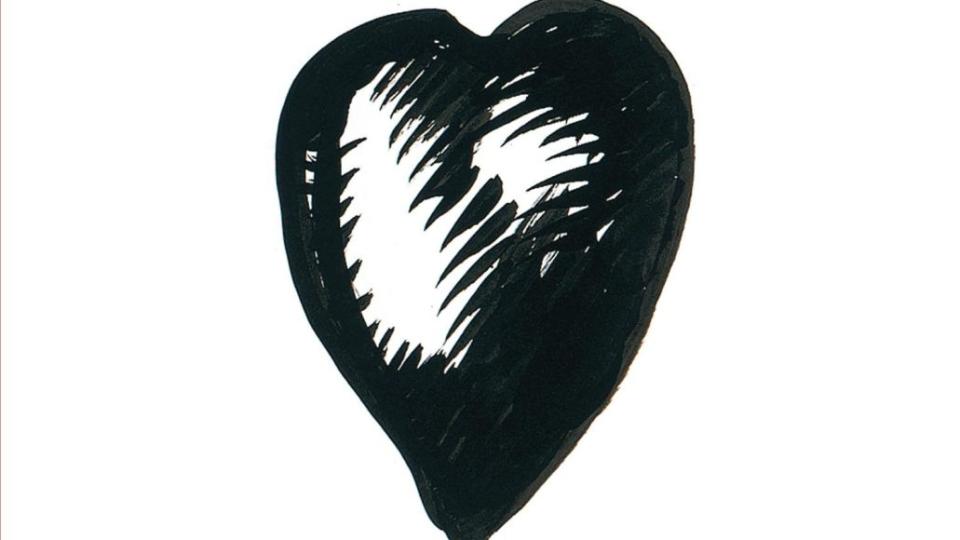
Runtime: 55:11, 11 tracks
Kudos, My Hero: The Foos started out with Adam Kasper, who had helmed 1999’s There Is Nothing Left to Lose. After those sessions didn’t work out and the group took a break, they opted to return with Kaspar’s engineer Nick Raskulinecz, who’d formerly worked at the legendary Sound City Studios, in the producer’s chair, charging him with capturing more of the Foos’ live concert energy in the recordings.
The Best of You: Grohl and company have always been creative rocketeers, and they steer down a number of welcome fresh paths on the group’s fourth studio album. But it’s a straightforward rock anthem, “Times Like These,” that stands out. Inspired by some of Grohl’s doubts at the time about the status of the band — but ultimately optimistic, declaring “I’m a new day rising/I’m a brand new sky” — it’s wrung through with emotion as urgent as its galloping tempo.
The Pretender: It’s a stretch to really call something “the worst” on an album that, despite issues the band encountered in making it (see below) is strong front to back. So let’s, reluctantly, put the tag on “Lonely as You,” a fairly straightforward relationship kiss-off that goes the same sonic places as a lot of the other songs here, only without the same kind of payoff.
Stacked to the Rafters: That would be “All My Life,” which only hit No. 43 on the Hot 100, but climbed to No. 5 on the Active Rock chart.
Them Balloons Are Pretty Big: One by One hit No. 3 on the Billboard 200, and was No. 1 in the UK. It also snagged a Grammy Award for Best Rock Album, and a nomination for “Times Like These” (Best Rock Performance by a Duo or Group with Vocal).
When I Sing Along with You: Foo Fighters had plenty of momentum going into its fourth studio album. The group was coming off a trio of platinum albums, and its predecessor, There Is Nothing Left to Lose, won the Grammy Award for Best Rock Album as well as spawning the Foos’ biggest hit to date, “Learn to Fly.” But One by One did not come easy.
The group, which had just added guitarist Chris Shiflett to the ranks, was battling a degree of burnout and internal combustion. Drummer Taylor Hawkins in particular suffered a heroin overdose during August of 2001 and went into recovery mode, while Dave Grohl was playing drums for Queens of the Stone Age. Grohl and bassist Nate Mendel were also at odds.
The first batch of recordings, done in Virginia and Los Angeles, were ultimately abandoned (“far too clean, too tame and boring,” Grohl told NY Rock), despite the Foos spending $1,000,000 on them. Only the Nirvana-esque “Tired of You,” which featured Queen’s Brian May as a guest, would make it to the ultimate release.
After a break to work on other projects, the feuding quartet caught fire again at the 2002 Coachella Valley Music and Arts Festival and decided to get back to the studio, this time working primarily with Nick Raskulinecz as co-producer. The results were harder-hitting — the group’s heaviest album yet, really, leaving the change-of-pace softer touches of There Is Nothing Left to Lose in the dust. It was as if the angst of the prior months was being channeled into the playing, and how the songs would fit in a live show being was taken into account throughout the process.
One by One boasts the earnest temperament of its predecessors, but still bristles with charged energy and even a sense of renewal. The throttle goes down right away with “All My Life” and continues through “Love,” “Have It All” and “Times Like These” before the trippy textures of “Disenchanted Lullaby” offers a bit of sonic relief.
“Halo” and “Overdrive” revel in smooth pop shimmer, and “Come Back,” weighing in at nearly eight minutes, closes the set with a grunge-psychedelic pastiche, with some sweet vocal harmonies from Grohl and Shiflett. The last words on One by One are a declaration that “I will come back,” which by that point feels more like a welcome promise than a threat. — Gary Graff
06. In Your Honor (2005)
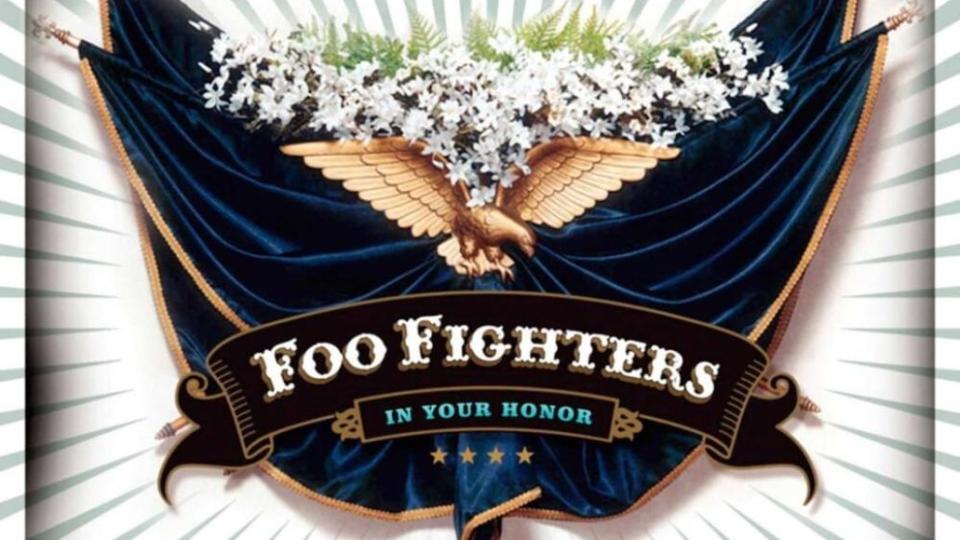
Runtime: 83:17, 20 tracks
Kudos, My Hero: Like One by One before it, In Your Honor was produced by then-studio newbie Nick Raskulinecz, who went on to work with the likes of Alice in Chains, Deftones, and Korn. Beyond making the album sound big and polished, it’s unclear what Raskulinecz’s intentions for production really were; In Your Honor retains the same ready-radio slickness Foo Fighters had been churning out for nearly a decade at that point. Which maybe means he did his job.
The Best of You: The Foos refused to play favorites in making In Your Honor a double album, so I refuse to play favorites here. In a rock album that occasionally veers into all-bark-no-bite territory, “Free Me” delivers on the band’s promise of aggression. The chiming chords of its insistent, cascading riff open the song with restraint, and once the band’s barrage of guitars begin to ignite, a slowed pause between verses ups the tension.
The song doesn’t truly explode until halfway through, when Grohl finally unleashes his famous, throat-tearing roar. Foo Fighters have gotten a lot of mileage out of the yelling-over-loud-guitars songwriting guidebook, but “Free Me” makes the best of this strategy with a melody ferocious enough to warrant the vocal, rather than one reliant on it to stand up.
Of course, building a song around a scream can make it difficult to execute in a live setting, which is probably why “Free Me” didn’t make it onto many Foo Fighters setlists following the In Your Honor touring cycle.
Which brings us to the album’s other standout, “Friend of a Friend.” The existence of “Friend of a Friend” on In Your Honor is a treat for Foo Fighters fans in itself. Written in 1990 shortly after Grohl joined Nirvana, the song originally appeared on the minimally circulated 1992 Pocketwatch cassette tape Grohl released under the pseudonym Late! before he re-recorded it for Foo Fighters over a decade later.
The first acoustic number he ever wrote, “Friend of a Friend” documents Grohl’s first impressions of Kurt Cobain and Krist Novoselic over a stark, back-and-forth riff, just guitar and vocals. The artist’s observations are just as straightforward as his music, and at once, you can picture the young band of misfits, pre-fame, just trying to navigate adulthood.
“He’s never been in love/ But he knows just what love is/ He says, ‘Nevermind’/ And no one speaks,” Grohl croons about one friend. Later, he turns to the other: “He thinks he drinks too much/ ‘Cause when he tells his two best friends/ ‘I think I drink too much’/ No one speaks.” While the 2005 recording ups the key of the song and Raskulinecz’s production smooths the gritty, lo-fi feel of the original, the power of young Grohl’s unvarnished poetry remains intact. It’s a gift to be let into something so personal. And yes, we know that’s two best songs.
The Pretender: You know what they say about letting the drummer sing. Taylor Hawkins original “Cold Day in the Sun” leans heavy into feel-good, Southern California soft rock, and while the drummer’s voice has a nice rasp, 1970s AM radio is not a vibe Foo Fighters wear well.
Stacked to the Rafters: Unsurprisingly, anthemic lead single “Best of You” became In Your Honor’s biggest hit, spending 33 weeks on Billboard’s Mainstream Rock Airplay Chart and four weeks in the chart’s No. 1 spot. In a way, the song summarizes Foo Fighters’ niche in modern rock; at once overly earnest and affecting, the song nudges its way into your brain, irks you with its incessant chorus, and, after some time apart, manages to charm you all over again. (You try watching the band perform the song live, slow down at the bridge, and allow the audience to belt out its “Oh oh oh/ Oh oh oh” breakdown without feeling a greater connection to the human race.)
Grohl has come to lean on the shout-vaguely-inspiring-lyrics-over-loud-guitars trick since he realized he could make a ton of money from it, but the chanted bridge of “Best of You” — “Has someone taken your faith/ It’s real/ The pain you feel” — features the type of prevailing sweetness that only the first of its kind can claim. Also, we can’t forget that it spawned the meme to end all memes:
Them Balloons Are Pretty Big: At the 2006 Grammy Awards, In Your Honor was nominated for Best Rock Album and Best Surround Sound Album, while “Best of You” received Best Rock Song and Best Rock Performance by a Duo or Group with Vocal nods, and the Norah Jones-featuring “Virginia Moon” was recognized in the Best Pop Collaboration with Vocals category. Unfortunately, it didn’t take home any golden trophies — making it the first Foo Fighters album since 1997’s The Colour and the Shape to lose out at the ceremony. It did rank at #30 in Rolling Stone’s list of the top albums of the year. Shrug.
When I Sing Along with You: “Can you hear me? Hear me screaming?” Dave Grohl asks on In Your Honor’s opening title track. The answer, overwhelmingly, was yes, and we haven’t been able to stop hearing him scream since. In Your Honor signaled the beginning of a new era for Foo Fighters, the first in a series of albums bogged down by gimmicks that emphasized a concept or a challenge over a strong batch of quality songs.
Here, the challenge was in dynamics; in a double album, 10 songs would thrash among Foo Fighters’ heaviest, while the other 10 would soothe the burns with gentle acoustic excursions. On its face, In Your Honor does its job, at least in terms of volume. But even a rock band with expert control over loud-quiet dynamics can find it hard to keep things fully interesting over an 80-minute runtime.
Grohl’s been screaming since Foo Fighters began, but on In Your Honor, the band relies on his (admittedly great) roar a bit too heavily at times. The agreeable nature of Grohl’s songwriting fares better on the album’s acoustic half, where prettiness is to be expected. Beyond the unflappable optimism of “Miracle” and the steadfast friendship of “On the Mend,” Side B’s most memorable moments come in the instances when Grohl tries out seriousness.
“Still” opens the second half with eerie keys and droning, tolling bass, as the singer recounts the true story of a child in his hometown committing suicide by laying on train tracks. “Nevermind, what’s done is done,” he sings, for once cool and detached rather than exceedingly charismatic. Here, Foo Fighters really succeed at doing something different, even if the album doesn’t always hit those same heights. — Carys Anderson
05. Echoes, Silence, Patience & Grace (2007)
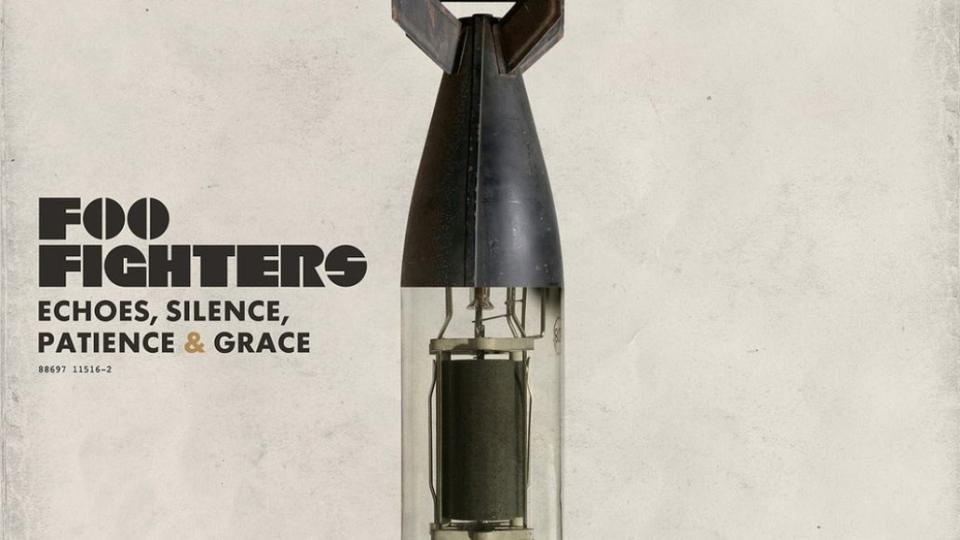
Runtime: 51:12, 13 tracks
Kudos, My Hero: After the two-disc electric-acoustic experiment of 2005’s In Your Honor, the Foos sought out Gil Norton — who’d done the honors on its sophomore album, 1997’s The Colour and The Shape — to help fuse those two sides together. “We felt like we needed someone who would push us a little more, and Gil had done that on The Colour and the Shape,” bassist Nate Mendel recalled at the time. “He really got into the songs, took them apart and put ’em back together. It was a lot of work, for everybody, but it paid off.”
The Best of You: Going to cheat a bit here and go with the one-two punch of “Cheer Up Boys (Your Make Up is Running)” and “Summer’s End” from the album’s second half. “Cheer Up…” is the kind of punch, full-on rocker Dave Grohl and company do so well, blending bits of Merseybeat and primal garage rock and incorporating a nicely woven vocal arrangement on the chorus.
The latter, meanwhile, is Southern (by way of California)-fried flare that references Buffalo Springfield and others of the late-’60s Sunset Strip ilk, a complementary tangent from the same sonic path. Coming back to back, the pair encompass so much of what makes Echoes, Silence, Patience & Grace so triumphant.
The Pretender: “Worst” is really a relative on an album that’s uniformly solid from start to finish — and fortified with some welcome left turns. Among its 12 tracks, however, “Long Road to Ruin” may be the weakest only because it’s the most familiar — a straightforward rocker with a melody that could be plunked onto any of the Foos’ five previous albums. You certainly won’t press “skip” when it comes on, but it does not take us anywhere particularly fresh.
Stacked to the Rafters: “The Pretender,” the album’s first single, hit No. 1 on Billboard’s Mainstream Rock and Alternative Airplay charts, as well as No. 37 on the Billboard Hot 100. It was also certified double platinum.
Them Balloons Are Pretty Big: Echoes, Silence, Patience & Grace peaked at No. 3 on the Billboard 200 and was certified platinum. It won the Grammy Award for Best Rock Album, Foo Fighters’ third win in the category, and snagged the group’s first nomination for Album of the Year. It was also named Best International Album at the Brit Awards, while “The Pretender” received nods for Record of the Year and Best Rock Song.
When I Sing Along with You: Foo Fighters’ sixth album is very much a product of its fifth. On In Your Honor, the quartet neatly divided its two discs into one of hard rock songs and and the second half of mellower, acoustic tracks — which the Foos supported with acoustic shows and an expanded lineup that included string players.
“The quiet side was an experiment, like, ‘Let’s try different instrumentation. Let’s try a different dynamic,'” bassist Nate Mendel explained around the release of Echoes, Silence, Patience & Grace. “And we did that and learned different things from it until we were able to bring some of those qualities into this album, so it isn’t just another rock album.”
For the new album, the Foos focused on making the two sides demonstrated on In Your Honor work together. The group reunited with The Colour and the Shape producer Gil Norton to put it through those paces, helping the group construct and deconstruct the material, focusing on arrangements that would suit the textures it was exploring. Stylistic restlessness became the album’s chief virtue, creating a dynamic ride that ranges from jagged rockers — such as “The Pretender” and “Erase/Replace” — to galloping anthems, like “Long Road to Ruin” and “Cheer Up Boys (Your Make-Up is Running).”
“Ballad of the Beaconsfield Miners” is the group’s first instrumental, full of finger-pickin’ acoustic pluck with an assist from Kaki King, while “But, Honestly” spends nearly three minutes as a yearning acoustic piece before blasting into a rock stampede. And “Home” features Grohl accompanying himself on piano with a string quartet filling it out later on.
Keyboardist Rami Jaffee and percussionist Drew Hester, both from the Foos’ expanded touring lineup, are on board as well. As is Pat Smear, returning to the studio after a seven-year hiatus from the band to play on “Let It Die.”
On most of Echoes, Silence, Patience & Grace, Grohl sings obliquely about loss and longing, the latter particularly evident during “Home.” A grim kind of resignation, meanwhile, peeks out on “Statues” and “Stranger Things Have Happened. “Let it Die” vents what many interpret as anger towards his late Nirvana mate Kurt Cobain (“Heart of gold but it lost its pride… Why’d you have to go and let it die?”), and some political underpinnings could be read into “Erase/Replace.”
Grohl laments at one point that “no one will believe me when I let these ghosts inside my head,” but those poltergeists clearly prompted music of considerable caliber, so he was well-advised to lay out the welcome mat for them in the future. — G. Graff
04. Wasting Light (2011)
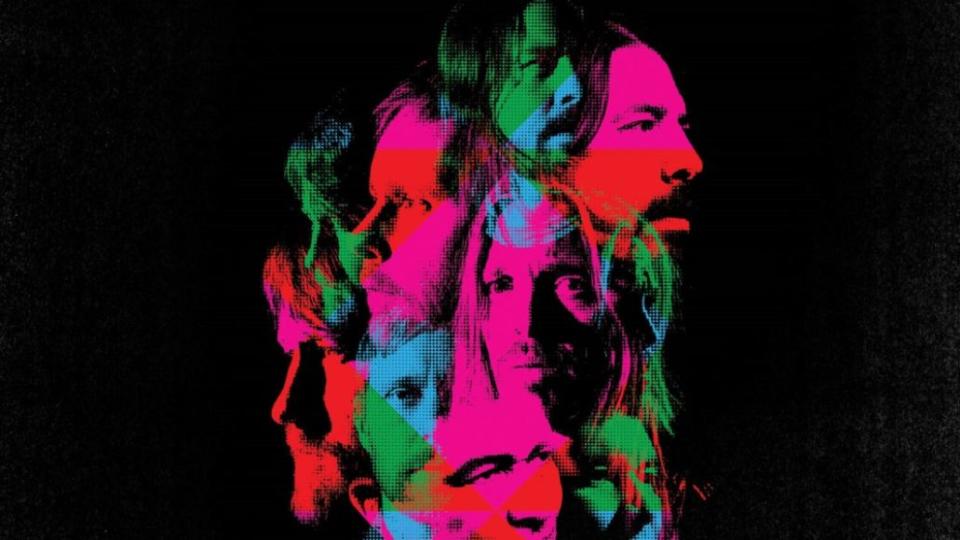
Runtime: 48 minutes, 11 tracks
Kudos, My Hero: In another attempt of getting back to the “basics,” Wasting Light was recorded in Dave Grohl’s garage with frequent collaborator Butch Vig. The album was tracked entirely using analog equipment and, according to the band, they committed to not changing what they recorded.
The Best of You: It’s gotta be “Rope.” The song epitomizes the new era of Foo Fighters with crystalline guitars, punchy drums, and an irresistible chorus. Taylor Hawkins really unleashes his creativity behind the kit, filling the empty space between guitar stabs perfectly, creating a complicated ride-bell rhythm for an otherwise wide open chorus, and launching into excellent drum solo fragments in the bridge.
The Pretender: “Back and Forth” is a Foo Fighters track that demonstrates their keen appreciation of ‘80s rock, though its chugging guitars don’t add a whole lot to the final product.
Stacked to the Rafters: “Walk” was a huge statement piece from Foo Fighters, who were definitely looking to create something that mirrored the optimism and earnestness of “Learn to Fly.” Not only is it a defining single of this era of the band, it’s a lasting anthem for fans everywhere. Although it only hit 83 on the Hot 100, it spent eight weeks at No. 1 on the Alternative Airplay chart and three weeks at the top of the Active Rock chart.
Them Balloons Are Pretty Big: Wasting Light earned Foo Fighters their second Grammy nomination for Album of the Year at the 2012 Grammy Awards, going up against pop heavy hitters like Adele, Lady Gaga, Bruno Mars, and Rihanna. Though they didn’t win that category (Adele’s 21 rightfully did), they scored Grammys for Best Rock Song and Best Rock Performance for “Walk,” in addition to being nominated for Best Hard Rock/Metal performance for “White Limo.”
When I Sing Along with You: Ahead of recording the album, Grohl stated that he wanted to create a work that would “define” Foo Fighters, a la AC/DC’s Back in Black. This was a pretty ambitious task for the band as they entered the sixteenth year of their career, and though there were already many “defining” moments for Foo Fighters, Wasting Light was absolutely the major statement album for which Grohl was aiming.
Songs like “Rope,” “Walk,” “These Days,” “White Limo,” and “Arlandria” frequently appear on Foo Fighters’ setlists today, and their earnestness and enthusiasm is exactly what will keep these songs in the Foo Fighters Hall of Fame. But overall, it’s shocking to think that this album was supposed to sound raw and unpolished; everything about the album’s sound and production, save for “White Limo,” perhaps, is covered in a highly-produced sheen that distracts from this mission. — P.R.
03. Foo Fighters (1995)
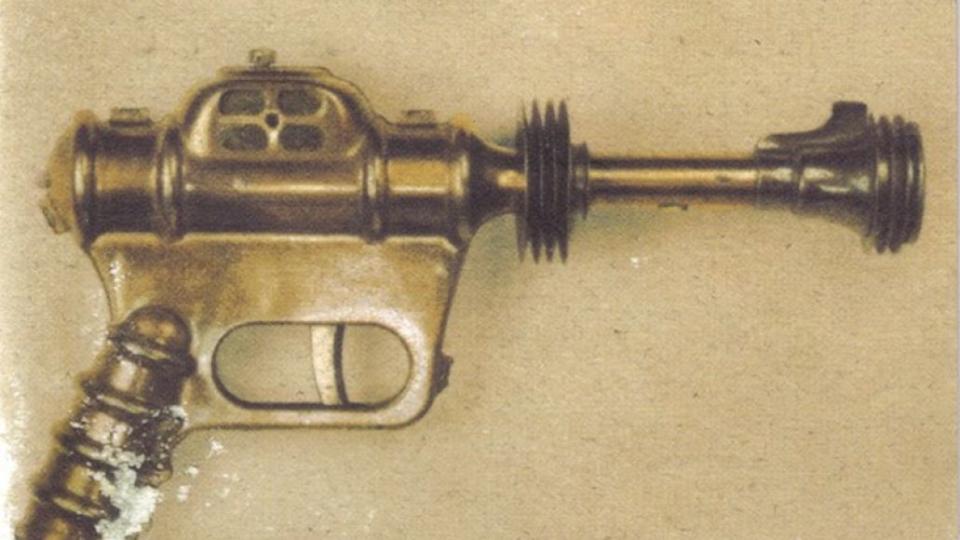
Runtime: 44:24, 12 tracks
Kudos, My Hero: Grohl recorded Foo Fighters in October 1994, but at the time, he didn’t know he was making an album. As the story goes, the artist booked a week at Robert Lang Studios in Seattle to do what he’d always done: put the songs he’d been quietly writing on his own to tape. As his first stint in a studio after Kurt Cobain’s death, the session was intended first and foremost as a way to get Grohl back in the groove of making music following his trauma, not the making of a decades-long new project.
It made sense, then, that he would team up with longtime friend/roommate/collaborator Barrett Jones, a fellow D.C. punk who’d recorded Grohl’s demos since he was a teenager. Jones’ punk roots are reflected in the unvarnished sound of Foo Fighters; given that he recorded every instrument himself, it’s clear Grohl was more concerned with getting a solid take of each part than creating a polished product. In retrospect, knowing how produced Foo Fighters would become, the gritty nature of the project’s debut makes it all the more special.
The Best of You: Foo Fighters captivates because it wears many hats, but as straight ahead rock songs go, second single “I’ll Stick Around” takes the cake. With a driving riff and some thinly veiled cynicism, Grohl’s (first) Courtney Love diss track at once offers some of his most biting lyricism (“How could it be I’m the only one who sees your rehearsed insanity”) and lays bare his determination to survive (“I’ll stick around and learn from all that came from it”). Like “This Is a Call” before it, “I’ll Stick Around” became the blueprint on which most future Foo Fighters songs would build, but its unique vitriol made it impossible to recreate.
The Pretender: “Big Me” is in no way a bad song, but from a collection of far more unique moments, the Beatles-esque two-minute pop number would be the one to cut. Its music video, on the other hand…
Stacked to the Rafters: Of course, Beatles-esque, two-minute pop numbers tend to do well in the grand scheme of things. “Big Me” spent 23 weeks on the Alternative Airplay chart, peaking at No. 3. “I’ll Stick Around” similarly became Foo Fighters a classic and spent considerable time on the charts, but it was “This Is a Call” that hit hardest, peaking at No. 2 on the Alt. Airplay list, even though it only spent 15 weeks charting.
Them Balloons Are Pretty Big: Foo Fighters was nominated for Best Alternative Music Album at the 1996 Grammy Awards, but lost out to Nirvana’s MTV Unplugged in New York, making for a bittersweet moment for Grohl. Still, the band’s debut made many-a year-end lists, including scoring the No. 2 spot on Rolling Stone’s Best Albums roundup.
When I Sing Along with You: Unpolished and unassuming, Foo Fighters dabbles in the interests of its maker without feeling forced. In fact, the album’s natural quality is perhaps its crown jewel. ‘60s pop, ‘90s alternative, thrashing punk, and all of their in-betweens flow cohesively because they all scan as Grohl’s interpretation of the genres rather than pure imitation.
The fuzzy power pop of “Good Grief,” for instance, wallops directly into the rousing “Floaty,” a shoegaze-inspired number that, in true Grohl fashion, comes out a bit too frenetic to achieve the genre’s blissed out aesthetics. A crash of cymbals breaks the spell of the song’s opening acoustic guitar, and despite its repetitive verses, the artist’s thundering backbeat inspires more devoted air drumming than detached head nodding.
Elsewhere, the metal-tinged vocals of “Weenie Beenie” and the tumbling riffage of “Wattershed” offer two scorched-earth love letters to the music of Grohl’s youth, while smug bar rocker “For All the Cows” perfects the loud-quiet-loud dynamics Nirvana (courtesy of Pixies) made famous. “My kind has all run out,” Grohl sings, taking stock of his pop stardom. As a sleazy riff builds to a chugging chorus, the frontman-to-be steps up to take his place.
For all its energy, Foo Fighters is unafraid to revel in the darkness. Droning lullaby “X-Static” soothes with warm power chords and army march drums, as Grohl keeps his voice to a low murmur. Moody closer “Exhausted,” another highlight, simmers with guitar crunch and extended feedback breakdowns. “What if the day had stayed in bed?” the artist hums, before the album fades out on the same melancholy riff. Leave it to Grohl to write grunge’s eulogy.
Foo Fighters will always be the odd duckling in the band’s discography; it wasn’t even recorded by a full band. Less tortured than the music that predated it and less refined than what would follow, the album documents a man in transition, immortalizing his first instincts without the weight of an audience or the expectations of success. It proved difficult for the band to retain this scrappy quality after 25 years of sold-out stadiums, but this ode to the underground endures. — C.A.
02. There Is Nothing Left to Lose (1999)
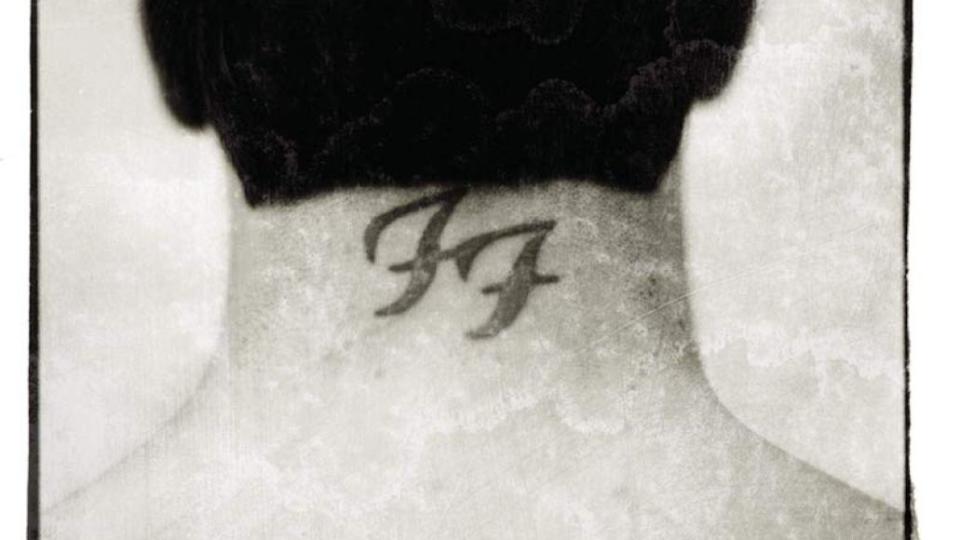
Runtime: 46 minutes, 11 Tracks
Kudos, My Hero: After the whirlwind success of Foo Fighters’ second LP, The Colour and Shape, Grohl, Mendel, and the newly-added Taylor Hawkins decided it was time to go back to basics. Grohl built a makeshift studio in his Virginia basement that he called “Studio 606,” with the band putting sleeping bags on the walls to muffle the sounds. Following each day’s recording session, the band would enjoy a barbecue. Besides the three members of the band taking the lead on production, Seattle native Adam Kasper worked on the album as a co-producer.
The Best of You: “Aurora” is one of those rare songs from a prolific band that seems to exist in an alternate universe: Built atop a pinwheeling guitar riff and rolling drums, Foo Fighters exhibit an impressive amount of restraint throughout the song, and the song’s climactic jam feels miles away from the stadium anthems for which they would become known. It’s a nostalgic, yearning number, equally stoned as it is energized, and it points to Foo Fighters as a remarkably diverse and capable band.
The Pretender: “Live-In Skin” is certainly meant to be more anthemic and universal than what it ends up being. The song gets a bit bogged down by a swampy riff that doesn’t develop as much as it should, and again by Grohl repeating, “I’m a mountain.”
Stacked to the Rafters: There is an undeniable sweetness to “Learn to Fly,” which is still one of Foo Fighters’ biggest hits to this day (it hit No. 19 on the Billboard Hot 100, and reached No. 1 on the Alternative Airplay charts). It’s a hopeful and incredibly earnest turn from the band, and it’s one that will live long in our memory — especially given the amazing hundred-musician jam that took place a few years ago in Cesena, Italy.
Them Balloons Are Pretty Big: In addition to winning Best Rock Album at the 2001 Grammys, the band also picked up the win for Best Short Form Music Video for the aviation-themed “Learn to Fly” visual.
When I Sing Along with You: Grohl claims that There Is Nothing Left to Lose came at a pivotal moment in the band’s career where they began to truly enjoy themselves, and this is absolutely evident on the album. It’s a mature and mostly restrained effort from Foo Fighters, who were easing into their positions as rockers fit for the new millennium. Overall, it shows much more of Grohl’s beating heart, his philosophy as an artist, and his incredible skill as a musician and songwriter. — P.R.
01. The Colour and the Shape (1997)
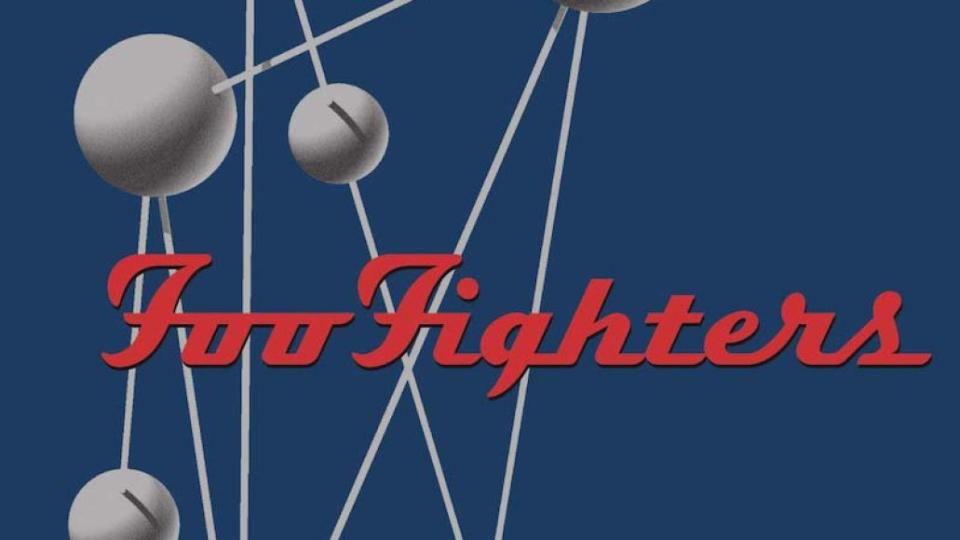
Runtime: 46:47, 13 tracks
Kudos, My Hero: Grohl shared a producer credit on Foo Fighters, an album where he tried to do everything himself except press record. When that LP became an international sensation and as the Foos turned from a pseudonym into a full-fledged band, Grohl brought in a big-name producer for the sophomore follow-up. Gil Norton had tended the boards for the final three Pixies albums, and the English legend seemed perfectly poised to usher the Foos into their expected grunge phase.
That didn’t quite happen; Grohl naturally tends towards more standard rock and roll, and Norton’s heavy-handed meddling during pre-production may have been one of the reasons that many of the early songs got scrapped. The band found Norton’s perfectionism draining, and despite the runaway success of The Colour and the Shape, they waited ten years before working with him again. Still, there’s no arguing with the results; their second album remains by far their most popular, and that extra “u” in Colour stands as a testament to their demanding English taskmaster.
The Best of You: There’s a tendency in music criticism to chose something expected, and if it were April 1st you can bet we’d be waxing poetic about “February Stars,” but honestly, how could it be anything other than “Everlong?” It’s not only the best song on the album, but also the most popular song in the Foos discography, and its release stands out as one of the greatest moments in rock history.
Grohl plays against that irresistible propulsive guitar riff at the beginning, singing in a soft voice, “Hello/ I’ve waited here for you/ Everlong.” Following that unexpected gentleness, the chorus appears with all the bold majesty of a rainbow after a storm. Even its placement on the album is perfect, arriving after the anxiety and mistrust of the first half to bring hope back into the world. If Grohl had done nothing else after Nirvana’s end, he’d still be a legend for “Everlong.”
The Pretender: It’s tempting to choose “February Stars” since it takes so long to get going, but “Wind Up” wins (loses?) out in the end. Here, Grohl wastes a fairly good guitar riff with a-melodic verses, but it’s the awful chorus lyrics that truly set it apart. “I want a song that’s indelible/ Like manimal/ Hope you never see me wind up,” he sings, as if pulling words randomly out of hat. The shrieking third-chorus vocals cry out for a lozenge and a cup of chamomile tea, ensuring that it rarely gets performed live.
Stacked to the Rafters: The real answer is “Everlong” (No. 2 on Active Rock, No. 3 on Alternative Airplay, No. 18 on Hot Rock & Alternative Songs), but since we can’t write about it in every single category, let’s spare a thought for “Monkey Wrench” (No. 3, No. 9, and uncharted, respectively). The Colour and the Shape’s lead single tracks the dissolution of Grohl’s four-year marriage to Jennifer Youngblood, with lyrics that protest at being used like a tool. The first two verses and the chorus thunder along, but the song peaks on the vocal chord-shredding third verse, as Grohl wails through “One last thing before I quit!” as if he’s literally willing to hurt himself to get the last word.
“Monkey Wrench” originally featured William Goldsmith on drums, but it didn’t work until Grohl passive-aggressively overdubbed his parts, and then the music video showed Goldsmith’s replacement, Taylor Hawkins, behind the kit, so in a sense it features all three Foo drummers at once.
Them Balloons Are Pretty Big: The Recording Industry Association of America certified The Colour and the Shape platinum in 1998, and “Everlong” was certified 2x platinum in 2017. As for awards, it may not have won a Grammy, but it’s more responsible than any other album for getting Foo Fighters into the Rock and Roll Hall of Fame, and it takes first place in almost every Foo fan’s heart.
When I Sing Along with You: Grohl has compared the movement of The Colour and the Shape to a therapy session, with tracks that alternate between tenderness and aggression representing conflicting emotions. But therapy is just a safe space to relive and remediate our traumas, and The Colour and the Shape is one of rock’s most vivid albums about clawing your way out of a toxic relationship and realizing you can still be happy.
The frantic anxiety of “Monkey Wrench” gives way to the growing distance of “Hey, Johnny Park!” and the desolate emptiness of “My Poor Brain.” Grohl realizes that small acts of kindness can make life worth living at the soaring, anthemic midpoint of “My Hero,” and by “Everlong,” he’s found love once again. The album ends with “New Way Home,” with Grohl, “always moving on and on,” and his repeated declarations that “I’m not scared.”
Other Foo studio sets have strong collections of singles, but The Colour and the Shape is a complete musical statement, a dredging up of trauma and a triumphant moving on. In the end, it’s the perfect summary of Grohl’s philosophy: Bad things happen, and acknowledging them is the best way to get on with celebrating the gift of life. — Wren Graves
Every Foo Fighters Album Ranked From Worst to Best
Consequence Staff
Popular Posts
Toyah Sings Velvet Underground's "Venus in Furs" as Robert Fripp Gazes in Amazement: Watch
50 Cent on Weight Jokes: "Fat Shaming Only Applies When You're Ashamed of Your Fat"
Robert Fripp and Toyah Tackle Smashing Pumpkins' "Bullet With Butterfly Wings": Watch
First Print VHS Tape of The Terminator Auctioned for $32,500

